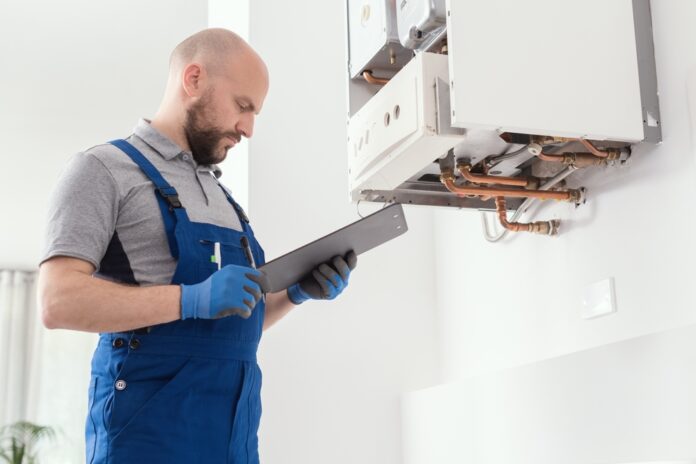Moving to a new home brings a lot of excitement; to look for a new neighborhood, prep for interior décor, and to plan home shifting parties, there is a lot to take in. When so many things come to the forefront, some fewer exciting things, such as safety and well-being, take the backseat. No matter how much the safety aspect of the new home feels tedious, it must be on the top of your to-do list. According to a report by Gas Safe Register, one in five homes in the UK contains gas appliances with a high risk of hazardous gas poisoning, gas leakage, and explosion. It is pretty arduous to consider gas safety checks and tell if the gas system in your home is safe or not without having some knowledge and expertise.
The Alarming Statistics:
We have been using gas as an energy source for the last two centuries; there are more than 23.2 million gas users in the UK alone. The provision of gas is a blessing and a threat alike because a minor fault in the appliance can turn your surroundings into ashes.
- Gas accidents cause colossal collateral damage and irrevocable destruction.
- According to a report, carbon dioxide poisoning accidents result in 60 fatalities on average.
- According to HSE, out of all carbon monoxide poisoning accidents that took place from 1995 to 2021, 34 percent were the outcome of gas leakage.
- Another disturbing report shows that 34% of all the fatalities in the UK resulted from faulty gas appliances.
- A report by Ridgas shows that Gas related accidents increased from 0.3 percent in 2017-2018 to 0.8 percent in 2019-2020. Injuries from exposure to gases and explosions also jumped up in the recent couple of years.
These statistics show that the provision of a CP 12 certificate holds extreme importance for the safety of your loved ones. Compliance with annual gas safety inspections not only fulfills your legal duty but also protects you from being accountable for any unwanted accident.
Gas Safety Checks in New Homes:
Here we bought some expert tips for you to safely move into a new home and create unlimited happy memories;
· For Tenants:
Of course, no one wants to live in a place whose safety is not guaranteed. Given these terrible statistics, you must ensure all the fittings, flues, and chimneys in the new house are safe to use.
Their safety can only be confirmed when you ask the tenant to show the gas safety record form, commonly termed a gas safety certificate. This will show the health of all the gas infrastructure of the new home.
If your tenant is unwilling to provide you with one, there could be two reasons. Either he did not issue the certificate in the first place or it has surpassed the expiry date.
In either case, getting the services of a qualified gas engineer to inspect the property is the only solution. Get in touch with a professional engineer in your area and get your appliances and flues examined after moving in.
· For Homeowners:
If you have got the privilege of buying a home, make sure the property is entitled as safe. For that, contact the former homeowner and ask for the certificate. Also, look at the ID number of the engineer who inspected that home and tracks his profile to know if he is gas-safe registered or not.
Moreover, the issuance date of the certificate must be taken into account, and if the expiry date has been passed or within a few days, appoint a certified gas engineer for the acquisition of the gas certificate.
Safety Tips for Home Renovation:
When you settle in a new house, the first thing that comes to your mind is to customize it according to your choices. The DIY projects are always exciting but are equally dangerous because a little mishandling can cause havoc.
According to a study, 15% of home renovation tasks increase the probability of deadly gas leakage. If your property needs any gas-related repair, let an experienced engineer do the job for you.
Here are a few must-follow tips for DIY projects after shifting to a new property;
- Do not include gas appliances in your DIY projects. Although such appliances contain a user manual, it is pretty risky for an amateur to fix them.
- Flues and air vents can get blocked, which means gases will flow backward, resulting in a carbon monoxide build-up in your home. So regularly clean the boiler flues and ducts to avert the blockage.
- Look behind the wall before hammering, drilling, or anchoring screws in the floor or the walls. You can use a pipe or stud detector to know if the gas pipelines are present behind the walls.
- Headache, suffocation, dizziness, and collapse are the most common symptoms of carbon monoxide poisoning. Knowing about the symptoms can help you take immediate action.
- Faulty appliances show some signs, such as sluggish yellow flames, black stains, and discontinuous pilot lights. If you notice these signs, do not ignore them. The best in your interest will be to call the professional to fix the issue.
- Always keep the emergency helpline number on your phone.
Key Takeaways:
In a nutshell, gas safety should hold the top position in your new home checklist because mere negligence can result in the loss of lives and an intricate legal proceeding that can put you in hot waters.
Moving to a new home brings both excitement and risks alongside it, but a safe and precautionary attitude will indeed protect you and your new home. Acquisition of gas safety certificates is a cornerstone of a secure environment.
Do not quench your DIY cravings for gas appliances because you do not have the requisite level of expertise to deal with such risky appliances. Call a professional engineer to get the job done for you.
Apart from that, if you are interested to know about 6 Ways to Reduce Your Electricity Bills then visit our Home improvement category.

















